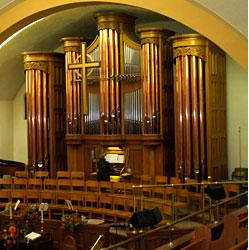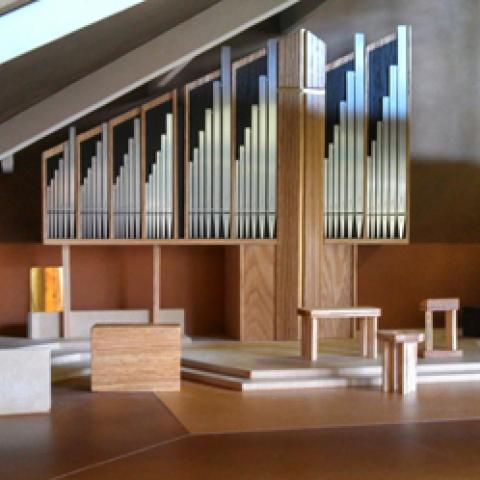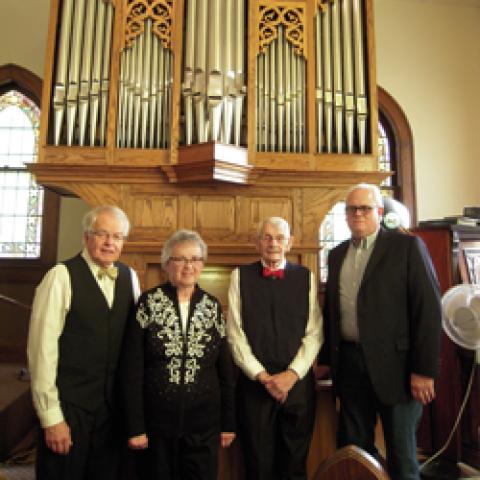
The 1990 J.F. Nordlie organ at First United Methodist, Sioux Falls, South Dakota, was re-consecrated to the music ministry of the church on Sunday, November 14, 2010.
Participants included builders-finishers of the three-manual tracker organ: John Franklin Nordlie, Eric Grane, and David Beyer. Organ performers included organ project chair and music minister, Rev. Richard Collman; organist from delivery until 1996, Marilyn Schempp; FUMC’s current organist, 1996 to date, Nora Christensen; and associate organist then and now, Bruce Feistner. Rev. Laurie Kidd, First’s current Worship, Music & Fine Arts Pastor, led the choir and was pianist in an organ/piano duet. Attending the concert was lead finish voicer A. Eugene Doutt, of Watertown, South Dakota, now 94 yrs old.
Gracing festival anniversary morning services and the afternoon concert program were Les Cloches (senior bell choir), the Chancel Choir, plus brass quartet and tympani. Pastors Bill Bates and Dick Boyd led the assembly in prayers at the concert and a litany of re-consecration during Sunday morning services.
For information: www.jfnordlie.com.




